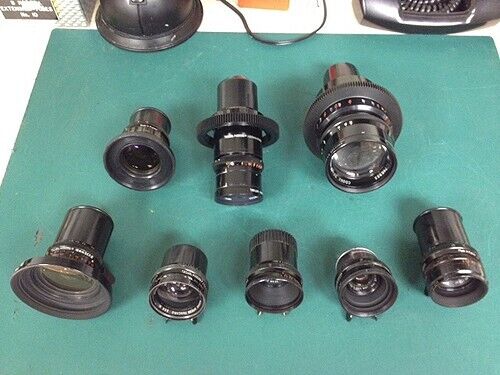IBC 2016 — The Good, The Bad & The 8K

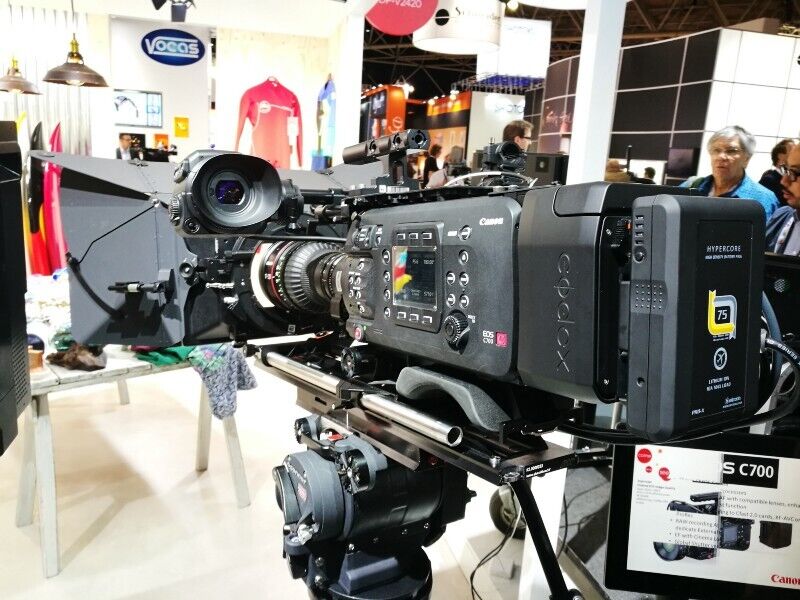
In the process of flying back to the UK from Amsterdam and the subsequent week of shoots that followed, I’ve had some time to reflect on what this year’s IBC had to offer.
Unlike BVE, where I spent a disproportionate amount of time drooling over the Alexa Mini, this time around I made a conscious effort to focus more broadly on new arrivals, new technology and areas that I was generally new to.
For those of you who aren’t aware of what IBC is, according to IBC themselves:
IBC is the premier annual event for professionals engaged in the creation, management and delivery of entertainment and news content worldwide.
Although I must have seen hundreds of lenses, lights, cameras and rigging options across the 14,385 exhibition halls at IBC (slight exaggeration), there were certainly some items that stood out to me, both for good and bad reasons. Let’s get to it.
The Good
1. Cooke: Anamorphic Zooms, E-Mount Mini S4/i & New Cooke Speed Panchros
Apart from supplying me with a free t-shirt and some top class bants, the good guys at Cooke Optics were keen to tell me about the new E-mount versions of their Mini S4/i range, which will cover the a7S’ full frame sensor and hopefully start to bring the “Cooke look” to more entry level productions. They were also displaying renders of their newly revived Speed Panchro range, which takes exact blueprints from the original 1920–40s lenses and blends them with the addition of modern ergonomics — something that I’ve previously excitedly written about.
From what I overheard, I don’t think P+S (and especially) TLS are particularly happy about this, as they’ll likely see demand for their own rehoused versions of the Speed Panchros diminish. They (TLS) were very keen to point out there was no way Cooke would be able to use the original coating recipe as it would breach modern manufacturing safety regulations.
When I asked Les Zellan from Cooke about this and mentioned that TLS were a bit butt-hurt by the sounds of things, he didn’t seem overly concerned, and was confident that their special coating formula would please DoPs. He then, in quite a stern tone, pointed out that “there are only a finite amount of the originals for TLS to rehouse”, to which I thought “calm down Les, don’t shoot the messenger”, but nodded in agreement. I then left, but not before snapping a quick shot of the magnificent 35–140mm anamorphic that was dominating half the stand. *dribbles*
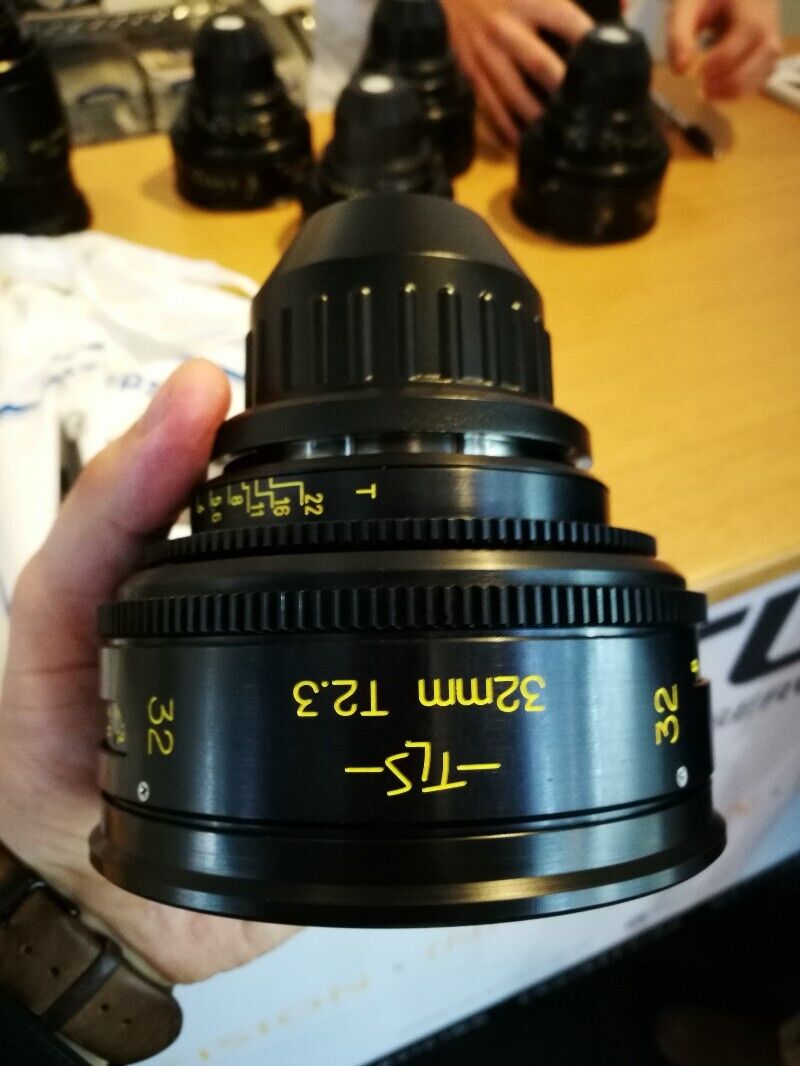
2. Cirro Lite Kino Flo Select LED Panel
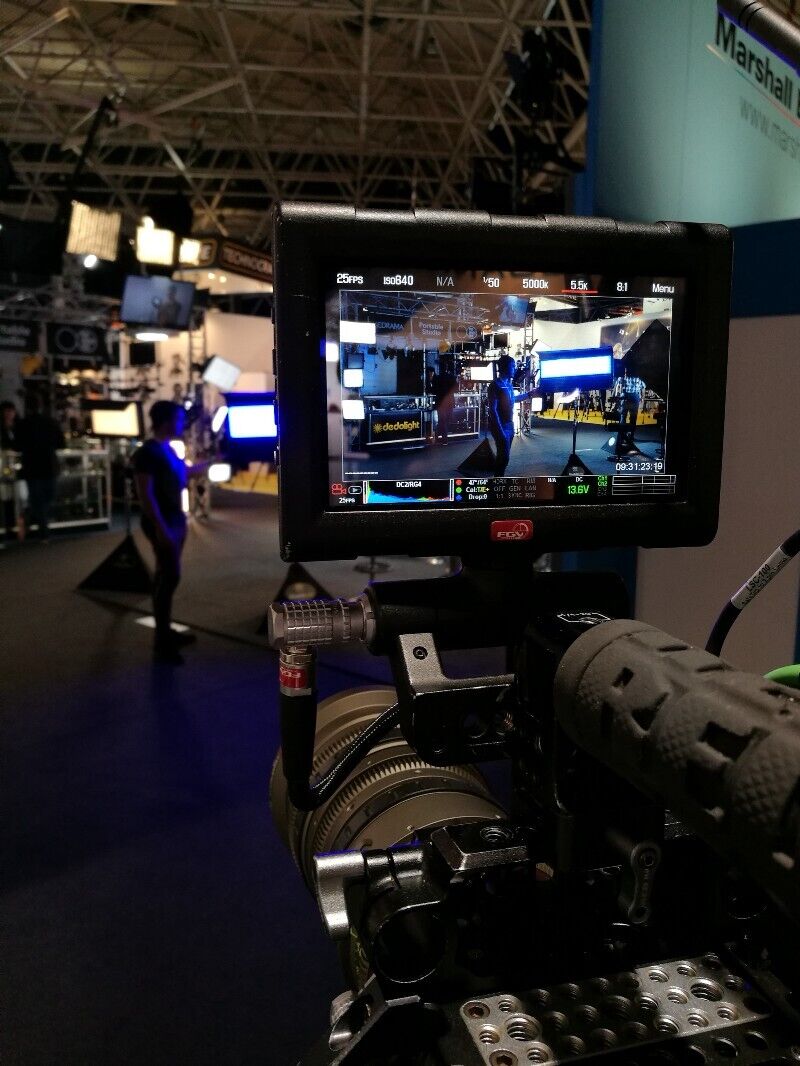
This one came about almost by accident. While I was over at Schneider’s stand pratting about with their new FF Cine lens range (which did have a cool cam-driven focus system) I noticed some seriously awful blue channel clipping on the screen of a RED Dragon, which was pointed at an LED lighting stand. I can’t remember the manufacturer, but they definitely weren’t a reputable brand. They were showing off something that a fair few stands were this year: interchangeable colour panels. You know how annoying attaching gels to lights is? No, me neither, but apparently gels are becoming obsolete now, you just dial in the colour on the light itself.
Anyway, this stand had a light that was dialled to blue, and I couldn’t believe my eyes as I stared at the histogram of the Dragon wondering why it was struggling with the same issues as the 8-bit a7S. Surely RED shouldn’t have this issue? I decided to eliminate one of the variables by heading over to Cirro Lite’s stand and whacking on their new Select LED Kino Flo to full blue. I then stormed over to Angenieux’s stand and politely asked (I didn’t) if I could use their RED Dragon to do a small test. They kindly obliged (they had no choice) and as I suspected, Cirro’s offering didn’t cause any clipping issues at all, even at full intensity. As it turns out I really like the new LED Kino Flo range, even if I’m still not that keen on getting rid of gels just yet.
Word of warning: Not all LED lights are born equal.
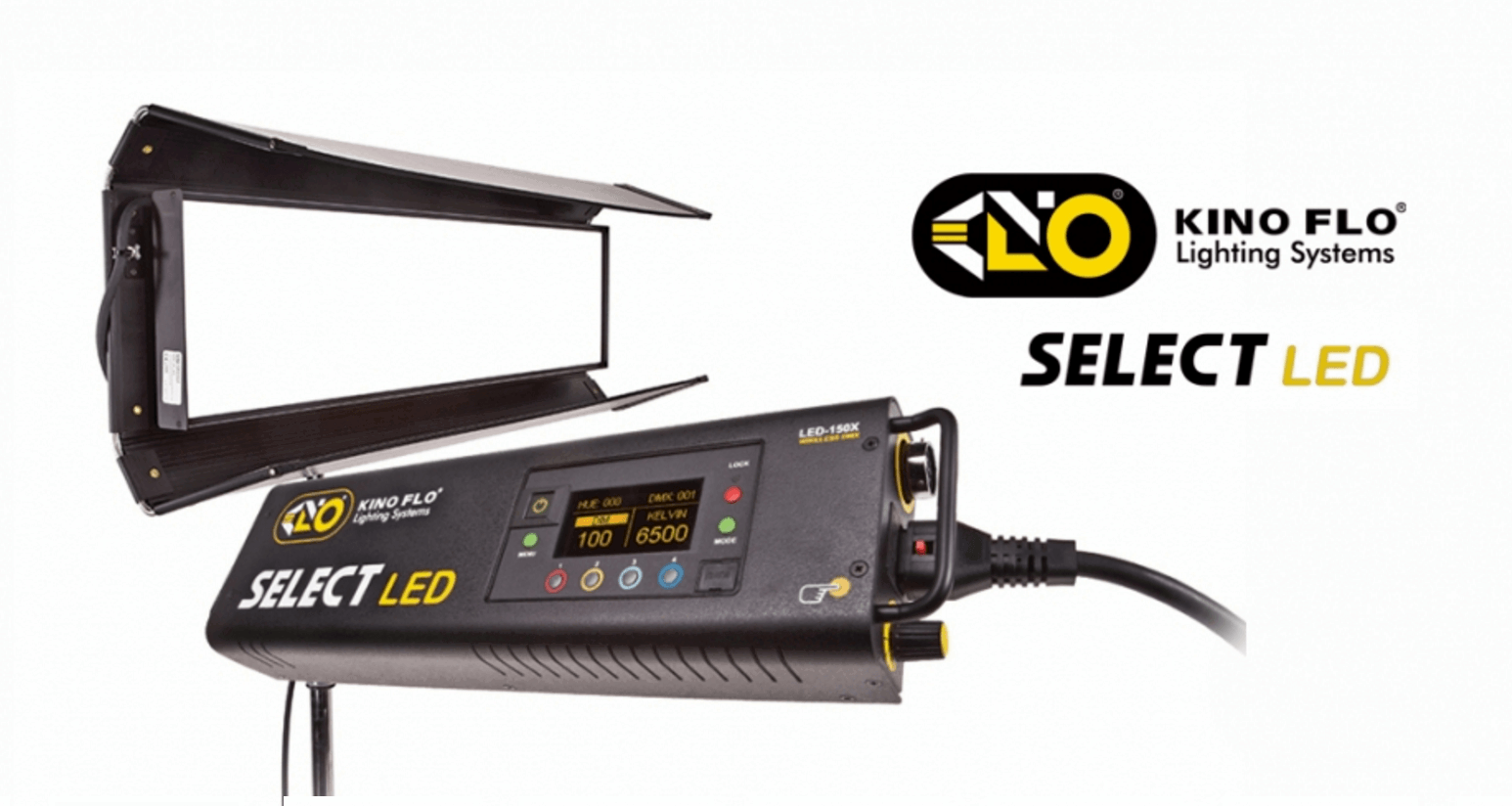
The Bad
1. Canon C700
Now, before I add a new filter to my inbox for all the hate mail I’m about to receive for writing this, I feel obliged to point out that this opinion is based solely on the ten minutes I spent with the camera at the Canon stand.
With that disclaimer in place, I’ll continue.
It has the form factor, texture and weight akin to a small breeze block. Coupled with the Codex box it feels about as heavy as the URSA, which we already know weighs only slightly less than a collapsed star. The decals on the assignable buttons had already been rubbed off and as far as appearance goes, it’s a trypophobic’s worst nightmare — it’s base and belly is covered in mounting holes.
On a slightly brighter note, global shutter and 4.5k are quite an interesting prospect when coupled with Canon’s colour science. It also took some attention away from the 5DmkIV.

2. Sigma Cine Lenses
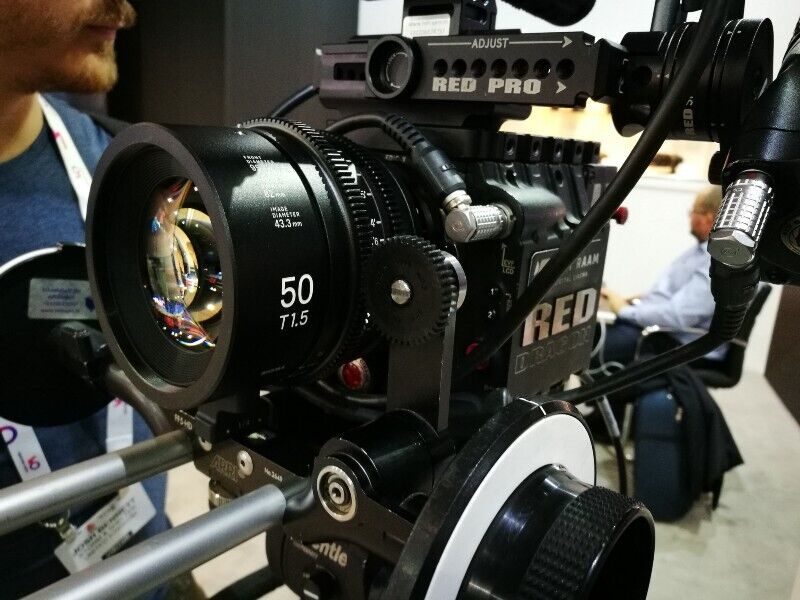
Let’s put it this way. If I was only allowed to say what I thought was good about the Sigma cine primes, I wouldn’t be writing much more than this introductory anecdote.
Yes, they look the part, they have gears, and white writing and have a familiar form factor. I thought for the price they’d be rivalling Zeiss CP2’s, but no.
No, no, no.
They are unmistakably photography lenses rehoused for the video market.
I came to the Sigma stand expecting to see something that lived up to the hype I’d seen online, but instead my first thoughts when looking down the viewfinder of the RED Dragon was “JESUS F*****G CHRIST, WHAT IS GOING ON HERE”, which was a knee-jerk reaction to the awful amounts of chromatic aberration I witnessed on the 50mm f/1.5 (photographed above).
Thinking that this might be a dud model or early prototype, I headed over to the 85mm. Low and behold, there it was again. I pretty much stopped my inspection at this point, as I became aware of the Sigma rep who I think may have been offended by my huffing and deep sighing.
Overall, a bit of a shit show from Sigma.
The 8K
If I had to give out an MVP award for the most helpful, knowledgable and insightful person I spoke to at IBC, the ironically named ex focus puller, Sam Measure, would definitely take the crown.
Holding the reigns at the RED stand and taking technical questions left, right and centre, Sam was able to give frank, honest and comprehensive information about everything I asked him. He even gave me his number to help me find some Hawk V-Lites. What a lad. ANYWAY, the reason I was at the RED stand was because until now, I’ve never been a big fan of the way RED seemed to increase their sensor sizes to get higher resolutions. From a DoP’s perspective, this just always seemed like an unnecessary brain-ache when working out focal lengths and crop factors of different lenses.
When RED announced the Helium, a Super-35 sensor 8K camera, they definitely caught my attention. After checking out the camera and having a good ol’ chin wag with my main man Sam, it became clear that RED have really done something special here. 8K with a small, light form factor and upwards of 16 stops of dynamic range in an array of frame rate options certainly got me thinking about the prospect of shooting on RED in the near future. The touch screen display was also nice simple and sharp.
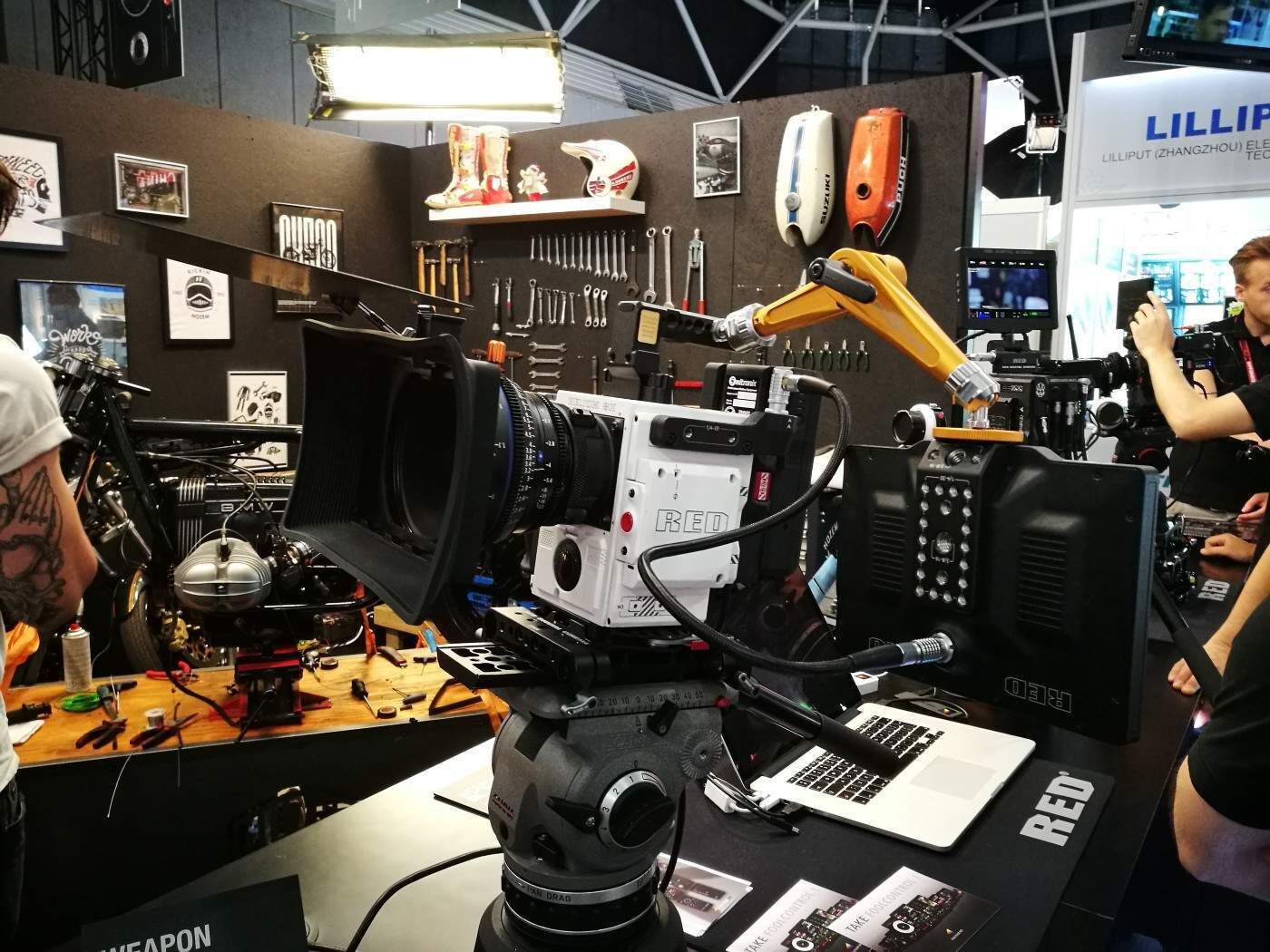
To conclude, a lot of what I’ve written in this article is based on a very short amount of time spent at each stand and so probably shouldn’t be carved in stone as my conclusive opinion on each item. However, it has given me some great first-hand experience from which I can do some more research and tests in the near future.
Until next time,
LJ
